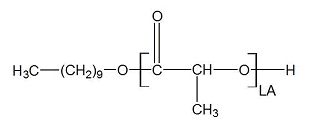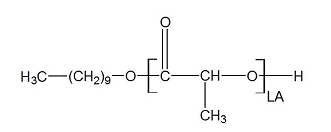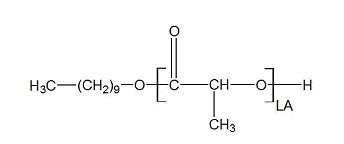
- Home
- Services
- Drug Delivery Nanoparticles Formulation
- Liposomes Production
- Polymeric Nanoparticles Production
- Peptide-Based Drug Delivery Systems
- Viral Vector-Based Delivery System
- Exosomes Production
- Porous Organic Frameworks (POFs) and Drug Load Customization
- Protein-based Nanoparticles Production
- Living Cell-Based Drug Delivery Systems
- Nanocages Production
- Metallic Nanoparticles Production
- Carbon-based Nanocages Production
- RNP-LNP Custom Services for Gene Editing Research
- Liposomes Production
- Other Types of Drug Delivery
- Rapid-Released Microneedle Patches-Based Drug Delivery System
- Transdermal Patches-Based Drug Delivery System
- Freeze-dried Flash Release Tablets Based Drug Delivery System
- pH Responsive Capsules-Based Drug Delivery System
- Microencapsulation-Based Drug Delivery System
- Sustained-Release Microspheres
- Wound Dressings-Based Drug Delivery System
- Drug-Loaded Contact Lens-Based Drug Delivery System
- Multiparticulate System-Based Drug Delivery System
- Polymeric Films-Based Drug Delivery System
- Controlled-Release Implant-Based Drug Delivery System
- Silica-Based Drug Delivery System
- Swellable hydrogel-Based Drug Delivery System
- GalNAc-Based Drug Delivery System
- Rapid-Released Microneedle Patches-Based Drug Delivery System
- Bioparticles Analysis and Characterization
- mRNA-LNP Vaccine Laboratory Process Development Assay
- Toxicity Measurement
- Drug In Vitro Testing
- Lamellarity Determination
- Drug Localization Analysis
- Bioparticles Stability Studies
- Bioparticle Component Analysis
- Bioparticles Zeta Potential Analysis
- Bioparticle Size and Morphology Analysis
- Pharmacodynamics and Pharmacokinetics Test
- Bioparticles Penetration and Permeation Test
- Bioparticles Encapsulation Efficiency Analysis
- In Vivo Fates Prediction Study
- Bioimaging Services for Nanoparticles
- Animal Model Construction
- Animal Models Evaluation
- Protein Binding Affinity Analysis on Artificial Lipid Droplets
- Aptamer Targeted Drug Delivery System
- Bioconjugation Services
- Functional Biomedical Coatings
- Nanoparticle Surface Functionalization
- Nanoparticle Surface Functionalization-Carboxylation (-COOH)
- Nanoparticle Surface Functionalization-Amination (-NH2)
- Nanoparticle Surface Functionalization-Thiolation (-SH)
- Nanoparticle Surface Functionalization-Hydroxylation (-OH)
- Nanoparticle Surface Functionalization-Aldehyde Modification (-CHO)
- Nanoparticle Surface Functionalization-Halogenated (-X) Modification
- Nanoparticle Surface Functionalization-Epoxidation Modification
- Lipid Library Development for Drug Delivery
- Antimicrobial Lipid Nanoparticles Formulation, Development, and Function Evaluation
- Barcoded nanoparticles (NPs) development for high-throughput in vivo analysis
- Lipid Nanoparticle Formulation and Development for mRNA Vaccine Delivery
- Organelle & Cell & Tissue Targeting Liposomes Formulation and Development
- Formulation Process Development
- Drug Targeting Strategy
- Bioactive Particles & Fillers Production
- Drug Delivery Nanoparticles Formulation
- Products
- Biopolymers & Synthetic Polymers
- Low PDI Polymers
- Poly(dimethylsiloxane)
- Biodegradable Polymers
- Block Copolymer Micelles
- PEG Conjugations
- Monomers
- Fluorescent Polymers
- Polyamino acids
- Cyclodextrin
- Polyorthoester
- PVP-Maleate Copolymers
- PEOT/PBT multi-block Copolymers
- Polyhydroxybutyrate
- PEG Polyamino Acids
- Polyamino Acids-PLGA
- Enviromental responsive copolymers
- Porous Organic Materials
- Transfection
- Chelating Agents
- Liposome System
- Bioactive Matrixes
- Cleavable Linkers
- PROTAC
- Exosome Products
- Tissue Engineering Scaffold
- Adjuvants
- Excipients
- Functional Ingredients
- Cell Membrane Biomimetic
- Lipids
- Patches
- AAV Products
- Biopolymers & Synthetic Polymers
- Technology
- Cargos
- Nanoparticles for Therapeutic Cargos —Vaccines
- Nanoparticles for Therapeutic Cargos — Nucleic Acids
- Nanoparticles for Therapeutic Cargos — Protein Drugs
- Nanoparticles for Therapeutic Cargos — Small Molecule Drugs
- Nanoparticles for Therapeutic Cargos-Virus
- Nanoparticles for Therapeutic Cargos-Health Products
- Nanoparticles for Therapeutic Cargos-Fluorescent Dyes
- Nanoparticles for Therapeutic Cargos-Flavors and Fragrances
- Nanoparticles for Therapeutic Cargos-Cosmetics
- Applications
- Nanoparticles for Medical Devices
- Nanoparticles for Cancer Treatment
- Nanoparticles for Medical Diagnostics
- Nanoparticles for Neurological Disease Treatment
- Nanoparticles for Cardiovascular Disease Treatment
- Nanoparticles for Dietary Supplements
- Nanoparticles for Food Industry
- Nanoparticles for Skin Care and Cosmetics
- Nanoparticles for Textiles
- Nanoparticles for Catalysts
- Nanoparticles for Agricultural Industry
- Routes of Delivery
- Delivery Vehicles
- Nanoparticles for Therapeutic Vehicles-Polymer Micelles
- Nanoparticles for Therapeutic Vehicles-Liposomes
- Nanoparticles for Therapeutic Vehicles-Exosomes
- Nanoparticles for Therapeutic Vehicles-Dendrimers
- Nanoparticles for Therapeutic Vehicles-Biodegradable Polymers
- Nanoparticles for Therapeutic Vehicles-Carbon Nanotubes
- Nanoparticles for Therapeutic Vehicles-Hydrogels
- Nanoparticles for Therapeutic Vehicles-Cyclodextrin
- Nanoparticles for Therapeutic Vehicles-Superparamagnetic Iron Oxide Nanoparticles
- Nanoparticles for Therapeutic Vehicles-Gold Nanoparticles
- Nanoparticles for Therapeutic Vehicles-Mesoporous Silica Particles
- Nanoparticles for Therapeutic Vehicles-Metal Organic Frame
- Nanoparticles for Therapeutic Vehicles-Quantum Dots
- Nanoparticles for Therapeutic Vehicles-HOFs
- Nanoparticles for Therapeutic Vehicles-DNA Origami
- Nanoparticles for Therapeutic Vehicles-Aptamer
- Nanoparticles for Therapeutic Vehicles-COFs
- Nanoparticles for Therapeutic Vehicles-Microemulsion & Self-Microemulsion
- Organ
- Adipose-Targeted Drug Delivery Systems
- Gastrointestinal-Targeted Drug Delivery Systems
- Tumor-Targeted Drug Delivery Systems
- Muscles-Targeted Drug Delivery Systems
- Bone-Targeted Drug Delivery Systems
- CNS-Targeted Drug Delivery Systems
- Kidney-Targeted Drug Delivery Systems
- Liver-Targeted Drug Delivery Systems
- Lung-Targeted Drug Delivery Systems
- Cargos
- Supports
- Company
- Register/Log in







